Subjects:
- Gaskets
- seal rings
Gaskets:
Every engine has gaskets and seals. With the help of gaskets, two parts of the engine can be mounted against each other. The two parts can both be made of cast iron, but also of plastic on iron. Depending on the type of engine material, a paper, aluminum or rubber gasket is mounted. Sometimes a sealant layer is also applied which serves as a gasket.
Below is an overview of all gaskets of a cylinder head of a Lexus RX300:

The cylinder head gasket (usually called head gasket) is the gasket that gets the most wear. The head gasket is mounted between the rotating part of the engine block and the cylinder head. With each power stroke of the engine, the piston is pushed downwards by the combustion force. This combustion force is set off against the cylinder head, because the space between the cylinder head and the piston must increase because the piston is moved downwards. The head gasket sits between the two engine parts and ensures that the combustion gases cannot escape from one cylinder room to the other. The head gasket also seals the oil and coolant channels that run from the engine block to the cylinder head.
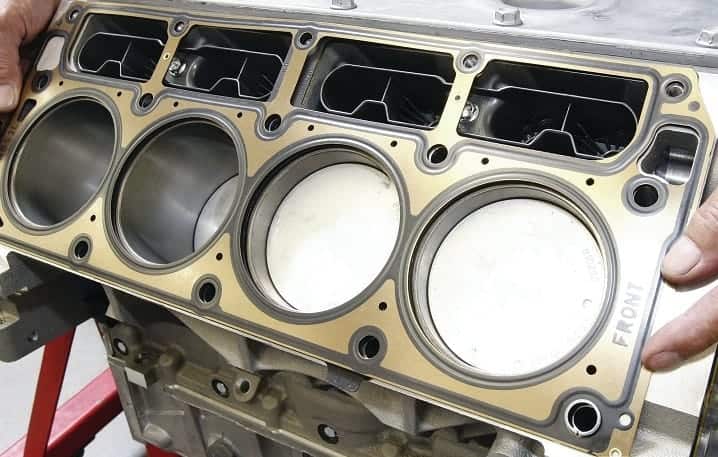
A defective head gasket can be caused in several ways Worden recognized:
- A mixture of oil and coolant occurs because the gasket between the two channels is torn.
- Smoke is coming from the exhaust of the car because the head gasket between an oil or coolant passage and the cylinder has ruptured.
- Oil or coolant loss is visible on the outside of the engine block (external leakage) because the head gasket has cracked in that place.
- There is a loss of compression because the head gasket has ruptured between two combustion chambers.
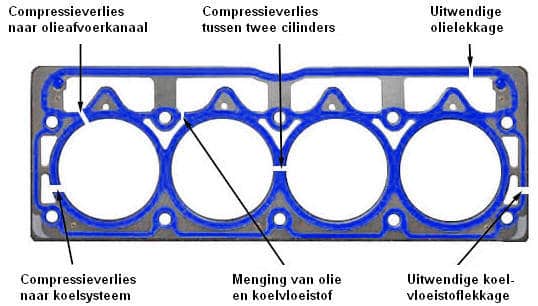
There are also several causes for the above defects, because a mixture of oil and coolant can also occur when the heat exchanger internally torn. Smoke from the exhaust can also be caused by bad piston rings or defective valve seals caused (blue smoke), or white smoke from a crack in the EGR cooler or cylinder head (coolant). Loss of compression can also have many other causes. Now it has been made clear how much "responsibility" the head gasket has on the functioning of the engine.
Gaskets between the parts have one important job. That's sealing. The picture shows a gasket of an EGR line.
This sealing gasket is mounted in the space between the EGR valve and the EGR pipe. The exhaust gases flow through the large hole and cannot escape thanks to the gasket. The EGR pipe is mounted on the valve by means of 2 bolts and the gasket is clamped.
Because the gasket is clamped, it will form on the one side to the valve and on the other side to the pipe. That is no problem when it is mounted, because this ensures an even better seal. When the parts are disassembled, it is important to replace the gasket. When it is reassembled after disassembly, the risk of leakage is very high. Especially if the gasket is turned around, the deformation of the material certainly causes problems. When engine parts are disassembled (think of exhaust parts, the thermostat housing, the inlet manifold, etc.), the gaskets must always be replaced.
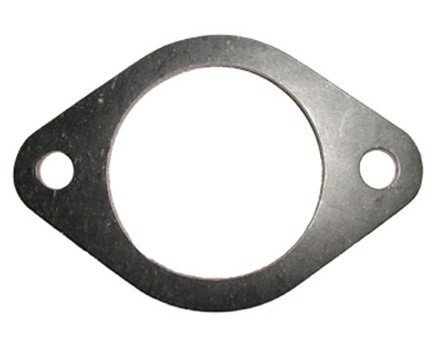
seal rings:
There are many rotating parts in the engine. Sometimes the rotating parts are visible from the outside, such as the crankshaft and camshaft pulleys. Seal rings are used to ensure a seal between the rotating parts and the engine block (see picture).
The outer side of the oil seal provides the seal against the engine block and the inner side to the rotating shaft (eg the crankshaft or camshaft). There is a spring in the seal. This spring makes use of the elasticity of the seal; the inside is additionally pressed against the shaft by means of the spring.
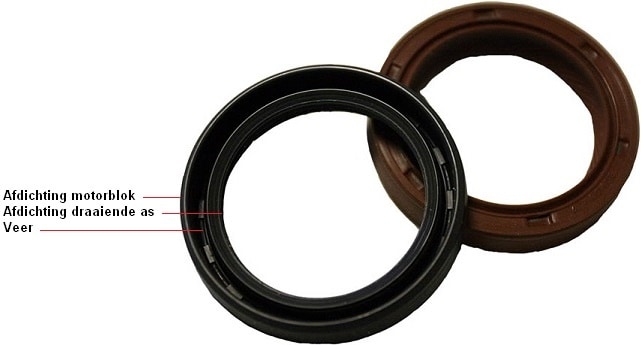
The image below shows a crankshaft seal. Here you can clearly see how the oil seal is attached between the engine block and the crankshaft. There is also a small oil channel in the engine block that runs to the oil seal. The engine oil can reach the oil chamber via this oil channel. A small amount of oil can get between the crankshaft and the rubber of the seal through this oil channel. This prevents the rubber of the seal ring from failing because the material of the crankshaft rubs against it. The crankshaft has a seal at both ends; at the front (this is often the distribution side) and at the rear (where the flywheel is mounted).
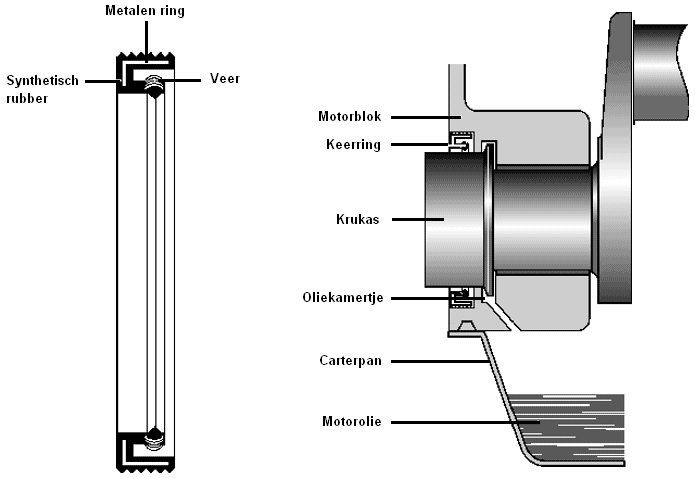
Replacing the seal ring sometimes requires a lot of work. If the crankshaft seal leaks on the flywheel side, for example, the entire gearbox and clutch with the flywheel must be disassembled. The crankshaft seal on the other side, often where the multi-ribbed belt and possibly the timing belt are, is easier to reach. The old sealing ring can often be tapped out with a screwdriver and a hammer. Be very careful that there are no scratches. The scratches are not sealed by the new seal, so there will be guaranteed oil leakage.
The new seal is often supplied with an auxiliary tool. This is often a plastic cap on the inside of the seal. This plastic cap provides a certain preload on the spring on the inside of the seal, so that the seal is easier to mount. During assembly, the seal ring must be lubricated with grease or oil, otherwise it can be damaged during assembly. Damage to the sealing ring will of course also lead to leaks.
The two images below show a crankshaft flange with and without the crankshaft seal:
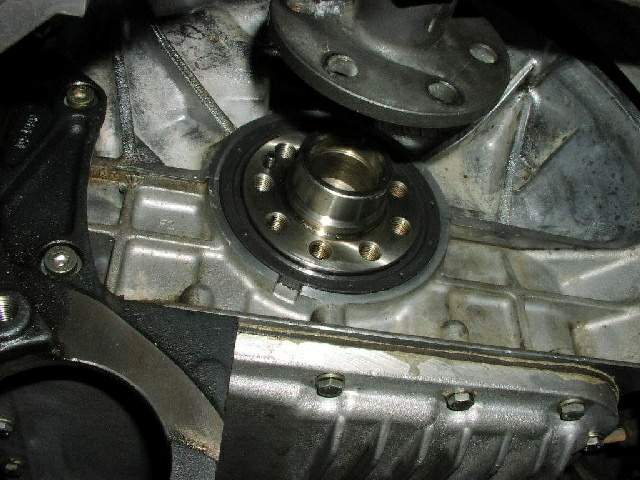
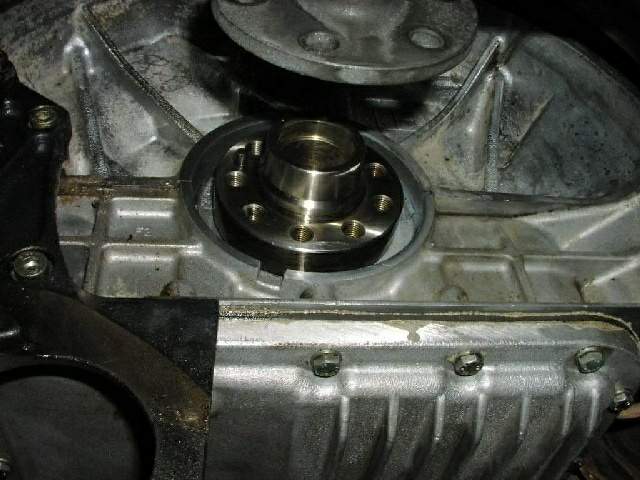
Related page:
